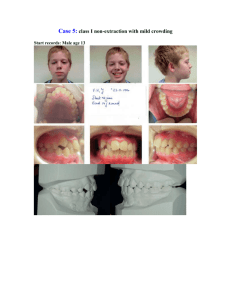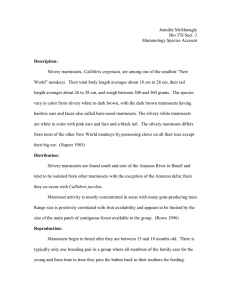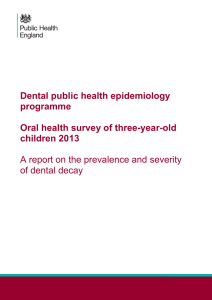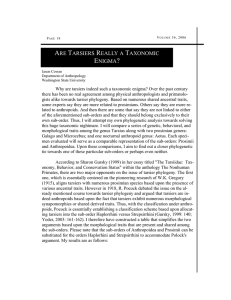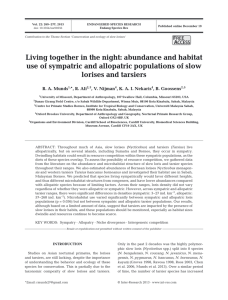Order PRIMATES
advertisement
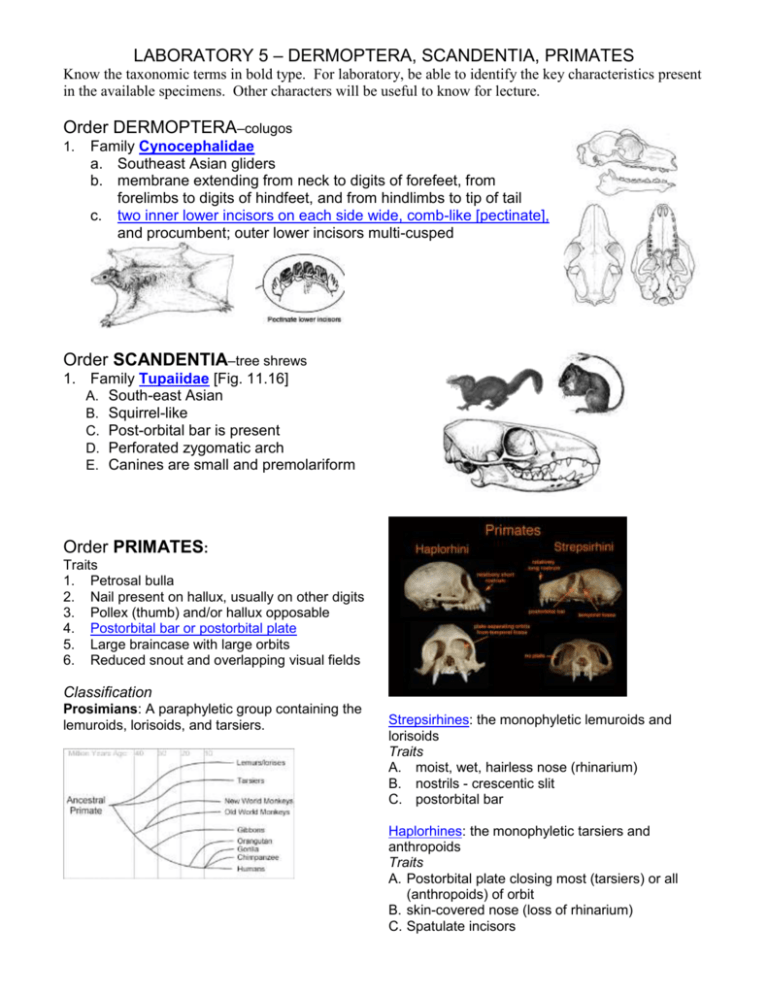
LABORATORY 5 – DERMOPTERA, SCANDENTIA, PRIMATES Know the taxonomic terms in bold type. For laboratory, be able to identify the key characteristics present in the available specimens. Other characters will be useful to know for lecture. Order DERMOPTERA–colugos 1. Family Cynocephalidae a. Southeast Asian gliders b. membrane extending from neck to digits of forefeet, from forelimbs to digits of hindfeet, and from hindlimbs to tip of tail c. two inner lower incisors on each side wide, comb-like [pectinate], and procumbent; outer lower incisors multi-cusped Order SCANDENTIA–tree shrews 1. Family Tupaiidae [Fig. 11.16] A. South-east Asian B. Squirrel-like C. Post-orbital bar is present D. Perforated zygomatic arch E. Canines are small and premolariform Order PRIMATES: Traits 1. Petrosal bulla 2. Nail present on hallux, usually on other digits 3. Pollex (thumb) and/or hallux opposable 4. Postorbital bar or postorbital plate 5. Large braincase with large orbits 6. Reduced snout and overlapping visual fields Classification Prosimians: A paraphyletic group containing the lemuroids, lorisoids, and tarsiers. Strepsirhines: the monophyletic lemuroids and lorisoids Traits A. moist, wet, hairless nose (rhinarium) B. nostrils - crescentic slit C. postorbital bar Haplorhines: the monophyletic tarsiers and anthropoids Traits A. Postorbital plate closing most (tarsiers) or all (anthropoids) of orbit B. skin-covered nose (loss of rhinarium) C. Spatulate incisors 1. Family Lemuridae–lemurs [Figs. 13.2, 13.12] 4. A. Elongate rostrum with relatively small eyes B. Dental formula is 2/2, 1/1, 3/3, 3/3 C. Procumbent lower incisors form a tooth comb; incisiform lower canine D. Madagascar 2. Family Daubentoniidae—Aye-aye A. Dental Formula: 1/1, 0/0, 1/0, 3/3 B. Incisors large and rodent-like (evergrowing) C. Elongate finger and nail D. Diet mainly of insect larvae, also fruit, etc. E. Madagascar 3. Family Loridae—Lorises, potto A. forward facing eyes B. shortened muzzle C. broad postorbital bar D. skull with temporal ridges E. Dental formula is 2/2, 1/1, 3/3, 3/3 F. Procumbent lower incisors form a tooth comb G. Diet of insects and fruit 5. Family Galagonidae--bushbabies (galagos) [figs. 11-11, 11-12, 11-13, 11-14] A. Closely related to lorisids B. large forward facing eyes C. short muzzle D. essentially spherical braincase E. Dentition similar to lemurs and lorises. F. Insectivorous to herbivorous Family Tarsiidae–tarsiers A. Partial post-orbital closure B. Extremely large, forward facing eyes C. Enlarged and pointed upper, medial incisors D. Insectivorous and carnivorous ANTHROPOIDEA-- monkeys and apes, including humans A. Eye sockets completely enclosed at the rear B. hairy-skin covered nose, ringed nostrils 7. Family Cercopithecidae--Old World monkeys A. auditory meatus with bony tube B. two premolars, molars bilophodont C. anterior root of p3 slopes forward and wears against upper canine. 8. Family Hominidae A. no tail B. two premolars C. Lower third molar with Y-5 pattern Ceboidea: New World monkeys and Marmosets A. Platyrrhine B. auditory meatus lacking bony tube C. three premolars D. Very short rostrum A. no tube; B. tube (arrow) 6. Family Cebidae-- (marmosets, tamarins, capuchins, and squirrel monkeys) A. Dental formula: 2/2, 1/1, 3/3, 3/3 for most B. marmosets, tamarins a. third molar absent (except in Callimeco) b. small size 8A. Subfamily Ponginae--orangutans, chimpanzees, gorilla A. a paraphyletic taxon B. forelimbs much longer than hindlimbs C. canines usually distinctly larger (especially in males) than adjacent teeth D. dental arcade parallel Catarrhines: – Old World monkeys and apes (including humans) 8B. Subfamily Homininae—humans A. Hindlimbs much longer than forelimbs B. dental arcade diverges posteriorly C. Foramen magnum positioned ventrally

